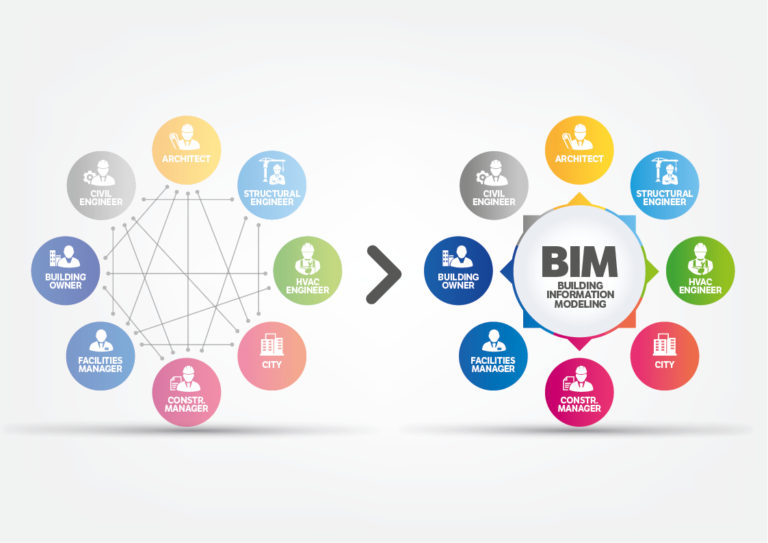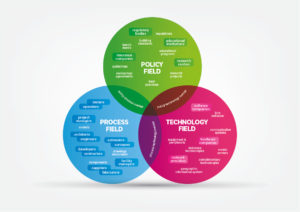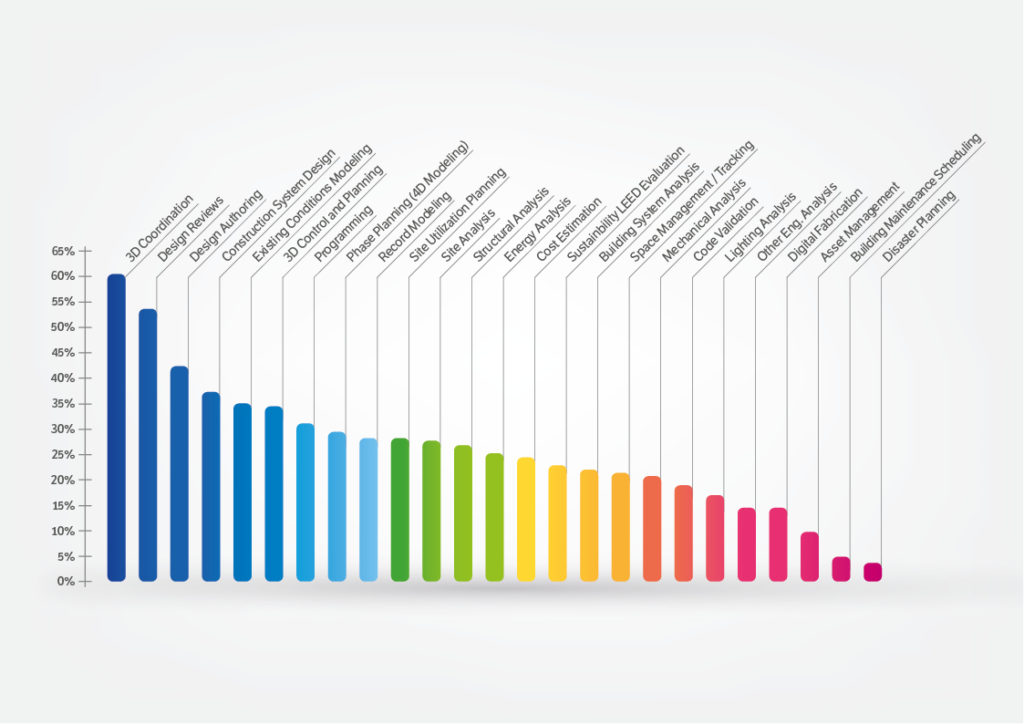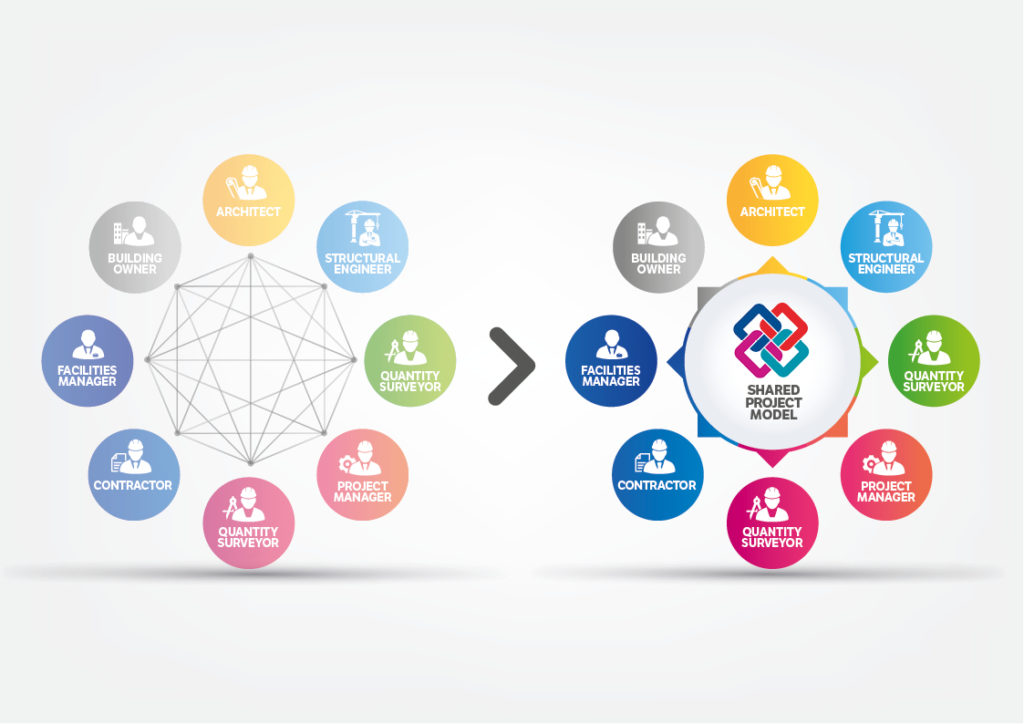BIM is changing the construction industry.
What is exactly the Building Information Modelling?
BIM is a dynamic set of procedures, processes and technologies that generate an interactive methodology to manage the design of a building and the data of a project in a digital format throughout the whole life cycle of the building’s life
BIM methodology was first theorized by Phil Bernstein and then made popular and standardized by Jetty Laiserin. The BuildingSMART Alliance, which is an international authority that regulates BIM, defines the concept through three main functions, which although different are linked to one another:
- Building Information Modelling grants control of the process for the creation and use of data to manage the construction; design and build of an edifice throughout its life cycle. BIM allows all the members involved in the project to have simultaneous access to the same information, due to the interoperability among the technological platforms.
- BIM permits the digital portrayal of the physical characteristics and complex structure, which comprise a building system. As so, it functions as a shared source of knowledge for information on a construction, in this way it creates a reliable foundation for decisions during the life cycle of the project, from the concept idea to the disposal.
- BIM assists organization on a policy level and-the control of the different process in the business using information in the digital prototype to put into action the exchange of information during all phases. The benefits compound the central and visual-communication, sustainability, the preliminary exploration of options, efficient-design, control and more.
The application of BIM technology has a direct or indirect influence on all stakeholders-within the architectural, -engineering-and-building sector. BIM is an alternative method to using, creating and sharing data in construction.
It is possible to define BIM as the technology of modelling and associate processes to produce, communicate and analyze a building model that is characterized by the following aspects:
- The construction components are represented as digital parametric objects that combine the graphic representation and data attributes, identify in different software parametric rules that permit them to be manipulated in a smart way;
- The components include the data that describe the behavior throughout the analysis or processes of work.
- The data is coherent-and non-redundant. Editing is shown in all the parts of the components and all the composition of which it is a part;
- Data and components refer to a single common database, so that the information is always up to date and the risk of error is lowered as much as possible.
Underlying concepts of BIM, tool or process?
One of the main discussion points concerning BIM regards its existence as a tool, process or both. The differing points of view arise from two schools of thought. In the paper ‘BIM, Education and the Global Economy’, Camps argues against the impression of BIM as a simple and single tool used in the construction industry, in fact, he highlights that by declaring it as a process, BIM is a factor of change that improves the collaboration among all the members of project teams. However, opponents argue that it should not be considered more than a single tool useful for an effective support of the IPD process.
A more complete shared opinion is related to the concept that the true value of BIM stands on the combination of it as a tool and process. The simple equation-tool + process = value of BIM is expressed as the value of-BIM is in the important building efficiencies and initial cost savings and extends to the operations and maintenance of the facility It is relevant to highlight that the more recent disengagement of-the construction industry from classing, time consuming, and-cost intensive activities was due to the introduction of new tools and processes. Therefore, being reluctant to innovation and change may lead to the same processes and no improvement.
On the same stream of thought, Fong strongly emphasized the extra value of BIM, interpreting it as more than a tool of technology, it should be incorporated in the-business as an aid for decision making to evaluate the quality of procedures, documentations as well as performance predictions and cost estimations.
The components of information: cost, time and quality
The illustration aims at giving a clear and visual idea of the coordination of information in a Traditional Information Exchange, the left side, versus the BIM Information Exchange, image on the right. The parties involved in the project can communicate and have access to information easily with fewer transactions among them. Intuitively this leads to the concept that the risk of misleading information flow is reduced using the BIM approach, reflecting the benefits on a reduction in cost and time. The increase in speed, communality and accessibility is achieved via a shared database that allows users to gather information early on, information technology and knowledge representation. Consequently, based on the previous studies, other conclusions of BIM include a significant decrease in risk, enhanced productivity, streamlined production and assistance of quality control.
The activity fields of BIM
The sphere of application of the BIM methodology
As shown in the figure, Building Information Modelling has different applications in the-AECsector.
The figure aims at showing a distribution of the activities. It is possible to derive an average value of the frequency of the application for each use of BIM. The data shows that 3D coordination and the revision of the design are widely used while the majority of the remaining usages are lower than 30%. However, the most significant result is that the use of BIM is well consolidated and covers almost all the activities in the AEC sector.
The publishing series of "Common BIM Requirements 2012" analysis of the objectives of all new constructions and restructuring, together with the use and facility management all the purposes of the use of BIM are stated.
Planning phase of the building
BIM is adopted to design the architectural and structural parts of the construction, together with the surrounding area.
Coordination
Different software is used to create different objects-and so, they can be joined together to find out possible conflicts. Anyway, the perfect solution would be the usage of models connected together since the beginning, such as, technologies of cloud computing.
Extraction of 2D sketch
During every moment in the design process, it is possible to extract from 2D sketches from the model and the designer can make sure that they are always up to date.
Communication and visualization
The 3D model is particularly useful for a deeper understanding of the planning solution, not only for the designers but also for all the different parties involved that are not familiar with the work of the experts. It also possible to work through the model; moreover, the use of BIM can be useful to real estate agents thanks to a strong visualization and potential buyers can more easily personalize the house’s design.
Decision making support
BIM can also be adopted to study the different alternatives, compare different parameters such as ranges of performances, scopes and costs. For instance, it can be helpful as support for different decisions on the investments.
Guarantee on costs
The control of the project is one of the most enriching values of BIM, because it allows us to spot and work out problems in the design phase instead of during the construction phase. Due to the control tools of the model, it is feasible to favor the building with rule-based software validation that relies on information that have been defined according to the BIM requirements. This method is advantageous to the client who can oversee and control if the requirements have been respected, but also for the security personnel of the building in order to do security checks.
Quantity Take-off (QTO)
Costs estimation
Linking costs to quantity, can allow you to accurately evaluate the costs. Moreover, the 5D model can allow the study for the development of the costs throughout the whole process.
Analysis
BIM can help architects in the simulation of the performance and life of the building. A different analysis can be run such as structural analysis, energetic analysis, sound and lights analysis.
Construction
BIM can also be adopted for the design of the security system and to study the layout of the construction site with a focus on synergies within the surrounding areas. Additionally, 4D simulations can be powerful for example to master the sequence of installation of the different components, the planning of the production, the building inspections and to visualize the construction phase.
Facility Management (FM)
BIM can be used as a support tool during the operation and maintenance of the structure, as well as for the restoration and design of the spaces.









